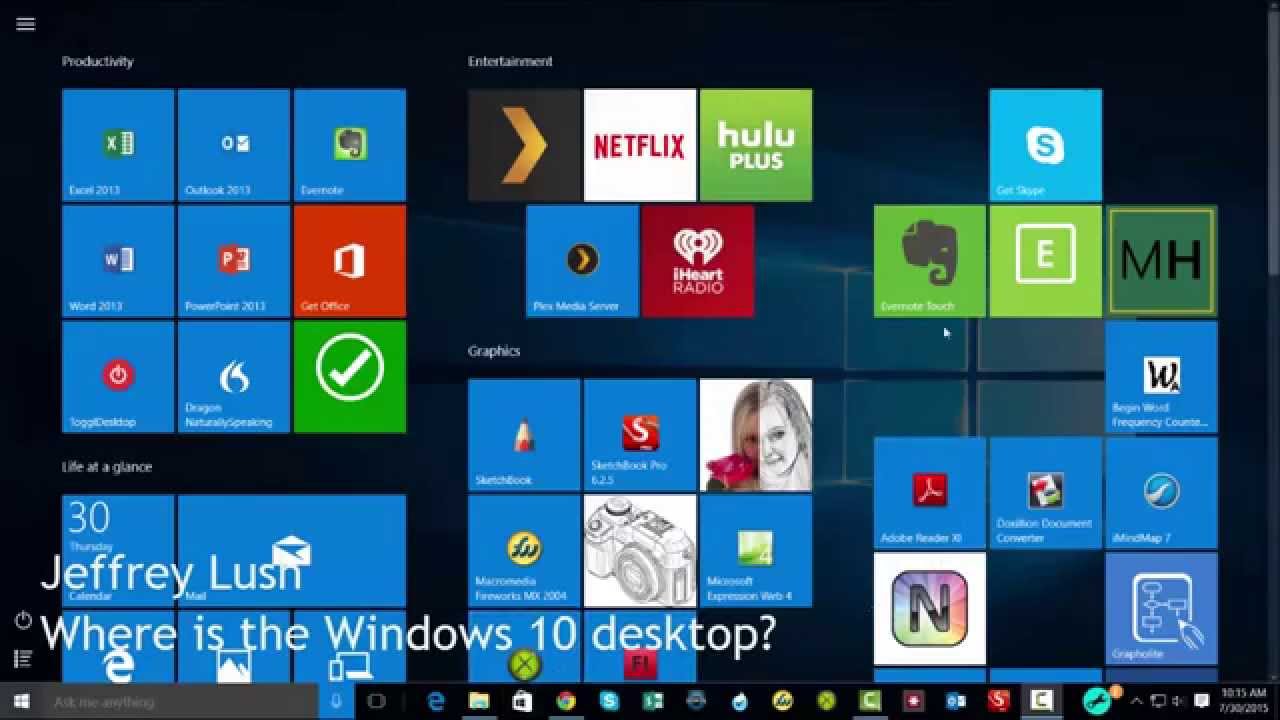
In the bustling digital world of Windows 10, the Desktop serves as the central hub for productivity, organization, and customization. Whether you’re launching applications, managing files, or personalizing your workspace, knowing how to navigate to the Desktop efficiently is essential for optimizing your computing experience. In this extensive guide, we’ll explore various methods for accessing the Desktop in Windows 10, uncovering shortcuts, tips, and tricks to streamline desktop navigation and enhance productivity.
Understanding the Importance of Accessing the Desktop: The Desktop in Windows 10 serves as a familiar and convenient workspace where users can access frequently used files, shortcuts, and applications. Whether you’re a seasoned power user or a novice, having quick and easy access to the Desktop is essential for managing tasks, organizing workflows, and customizing your computing environment to suit your preferences and needs.
Methods for Accessing the Desktop in Windows 10: Windows 10 offers multiple methods for accessing the Desktop, catering to different user preferences and scenarios. Here are some of the primary methods:
1. Using the Taskbar:
- The Taskbar, located at the bottom of the screen by default, provides quick access to the Desktop. Simply click on the “Show desktop” button located at the far right end of the Taskbar to minimize all open windows and reveal the Desktop.
2. Using Keyboard Shortcuts:
- Pressing the Windows key + D simultaneously is a keyboard shortcut that instantly minimizes all open windows and takes you to the Desktop. This shortcut is especially useful for quickly switching between tasks or accessing desktop icons.
3. Using the File Explorer:
- Open File Explorer by clicking on the folder icon in the Taskbar or by pressing the Windows key + E.
- In the File Explorer window, you can access the Desktop by clicking on “Desktop” in the left sidebar under “Quick access.”
4. Using the Show Desktop Shortcut:
- The Show Desktop shortcut, located at the far right end of the Taskbar, provides quick access to the Desktop with a single click. Hovering over the Show Desktop shortcut without clicking allows you to preview the Desktop without minimizing your current windows.
5. Using the Alt + Tab Shortcut:
- Pressing Alt + Tab allows you to cycle through open windows and applications. When you reach the Desktop thumbnail, releasing the keys will bring you directly to the Desktop.
6. Using the Start Menu:
- Click on the Start button in the Taskbar to open the Start menu.
- From the Start menu, click on the “Desktop” tile or select “Desktop” from the list of options to navigate directly to the Desktop.
Tips and Tricks for Desktop Navigation: To enhance your desktop navigation experience in Windows 10, consider the following tips and tricks:
- Customize the Taskbar: Pin frequently used applications and shortcuts to the Taskbar for quick access. Right-click on any application icon and select “Pin to taskbar” to add it to the Taskbar.
- Create Desktop Shortcuts: To access frequently used files, folders, or applications directly from the Desktop, create shortcuts by right-clicking on the item, selecting “Send to,” and then choosing “Desktop (create shortcut).”
- Organize Desktop Icons: Keep your Desktop clutter-free and organized by arranging icons into folders or using tools like Fences to group related shortcuts and files.
- Use Virtual Desktops: Windows 10 allows you to create multiple virtual desktops, each with its own set of open windows and applications. Use the Task View button (located next to the Search bar in the Taskbar) to create and switch between virtual desktops, keeping your workspace organized and focused.
Conclusion: In conclusion, accessing the Desktop in Windows 10 is a fundamental aspect of navigating the operating system efficiently and maximizing productivity. By familiarizing yourself with the various methods for accessing the Desktop, utilizing keyboard shortcuts, and implementing tips and tricks for desktop organization, you can streamline your workflow, manage tasks effectively, and personalize your computing environment to suit your needs. Whether you prefer using the Taskbar, keyboard shortcuts, or File Explorer, mastering desktop navigation empowers you to make the most of your Windows 10 experience. So go ahead, explore the different methods for accessing the Desktop in Windows 10, and unlock the full potential of your desktop workspace!